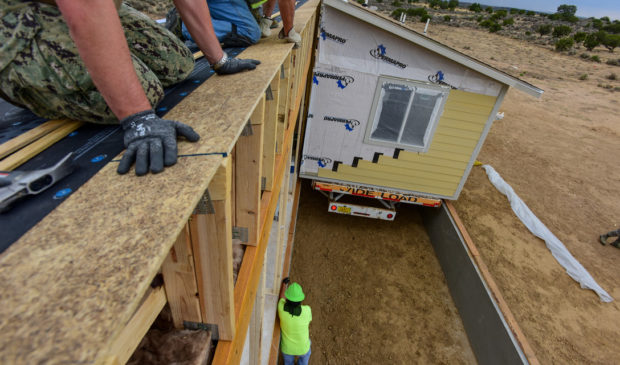With affordability funding looming, housing proponents have questions
Monday, April 8, 2019 by
Chad Swiatecki With housing project applicants angling for portions of the city’s coming $250 million in general obligation bonds for affordable housing, city leaders charged with finding the right mix of new units are starting to wrestle with questions of how much new affordable housing should cost and where those units need to go.
A recent meeting of the Housing Investment Review Committee – an advisory board that reviews quarterly applications for affordable housing funds and gives input to city staff – showed how committee members and those on other boards are negotiating the complex calculus of price, size, location and city policy. With 11 projects up for review offering a mix of single-family versus multifamily projects, high and low price points and per-unit subsidies, the committee is weighing impacts to surrounding land values that could cause further gentrification while trying to increase affordability.
Take for example the ThinkEAST development off Springdale Road, which has a 97-unit affordable housing component under development by the Cesar Chavez Foundation that is on pace to receive a subsidy of about $40,000 per unit with an average price of $220,000 per apartment.
At first glance, some viewed that price as out of bounds to be considered affordable. But with more than half the units being two or three bedrooms – a commonly addressed need for new housing – committee members saw the project and its subsidy level as reasonable for a growing part of the city.
“I raised the point that you’ve got lots of bedrooms with 97 units and only 44 are single-bedroom, and if there’s two families you can house more people – versus if it’s all efficiencies, that’s only one or two people per unit,” committee member Dave Sullivan said.
The applicant pool was for projects looking to tap money still on hand from the city’s 2013 affordable housing bond vote and money contributed to the city’s trust fund for affordable housing by developers, but Sullivan and others said there is growing debate about how the city will deploy the bond money from November’s general election vote.
“The thing we’re wrestling with is, what is the overall strategic goal for this,” Sullivan said. “There’s a question of if we can get 10,000 residential units out of this if you take the $250 million and go to $50,000 each, you get 5,000 units. But with a need for 137,000 units and only getting a fraction of those priced at 60 percent of median family income over the next 10 years, we’re not going to get there with $250 million in GO bonds. We don’t know yet what we’re going to get from Greg Casar’s Unlocking Affordability policies, but that’s another arrow in our quiver. We need many tools because the Legislature takes away many things other cities can do.”
Introduced in February, Casar’s proposal seeks to relax a variety of building requirements in exchange for developers adding more affordable housing units in more parts of the city. This is expected to allow the creation of more affordable units with the $250 million in bond money than would be possible under existing building regulations.
Committee member Joe Deshotel, who is also a member of the Community Development Commission, said he and others involved in the affordable housing effort face the recurring issue of stretching the housing money further in East Austin where property is more affordable, while also trying to offer housing in all parts of the city.
“They give us maps that overlay where grocery, transit and jobs are and it’s important to have some economic diversity in terms of where these projects are going so that people are living among different income levels. (It’s) important to let all neighborhoods in Austin know that no one is exempt from welcoming Austinites of different economic strata,” he said. “The other reality is that some of the areas where our dollars will make the most impact are going to be in East Austin or Southeast Austin and Northeast Austin. There has to be a balance of what is the real goal? Is it to get units where people live and not be pushed further out? I tend to prioritize that and keeping the pressure on West Austin so there’s not a bubble around any part of town.”
Deshotel said he’s on the lookout to weed out developers who view the affordable housing push as an opportunity to get the city to underwrite part of their costs while doing the bare minimum to qualify as affordable.
“There’s the question of if someone is trying to do the least possible to get the public benefit to develop in a certain area or at a certain height level,” he said. “It’s incumbent on us to make sure we’re really getting the value for our dollar and not just how many units we’re getting. It’s how many bedrooms, and how close it is to a transit stop and are there jobs in that area. It’s a chicken-or-egg scenario when you look at these maps for gentrification and what’s considered early versus late stage.”
U.S. Air National Guard photo by Senior Airman Megan Floyd.
The Austin Monitor’s work is made possible by donations from the community. Though our reporting covers donors from time to time, we are careful to keep business and editorial efforts separate while maintaining transparency. A complete list of donors is available here, and our code of ethics is explained here.
You're a community leader
And we’re honored you look to us for serious, in-depth news. You know a strong community needs local and dedicated watchdog reporting. We’re here for you and that won’t change. Now will you take the powerful next step and support our nonprofit news organization?






